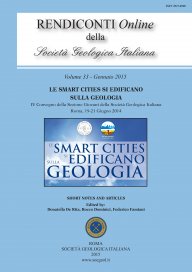
Tectono-stratigraphic evolution of southern margin of the Crotone Basin (Calabria, south Italy)
Fabrizio Brutto (*), Francesco Muto (*), Vincenzo Tripodi (*) & Salvatore Critelli (*)
(*) Dipartimento di Biologia, Ecologia e Scienze della Terra, Università della Calabria, Via Pietro Bucci, 87036 Arcavacata di Rende (CS), Italy. E-mail: fabrizio.brutto@gmail.com
Volume: 33/2015
Pages: 8-12
Abstract
The Crotone Basins (CB) (Zecchin et al., 2013 and references therein) is located in the eastern sectors of the Sila Massif. The CB depicts the Neogene-Quaternary foreland basin of central Mediterranean region. The study area is influenced by different set of NW-SE major transcurrent faults and their antithetic lineaments which show alternating episodes of transtensional and transpressional faulting.
Southwestern sector of the basin was characterized by three main fault patterns:
1) Active since Serravallian, NW-SE oriented faults bordering the CB to the west and with a left-lateral strike slip kinematics at the first stage. This transtensional phase has produced the basin opening, filled by coarse-grained, sand, clay and evaporitic deposits.
2) To the central part of the study area, Miocene deposits was displaced by NNW-SSE and NE-SW oriented faults, this pattern displays a dextral transpressional kinematic which seems to replace extensional kinematic giving rise to local inversion of former basins.
3) The CB experienced a new extensional phase along N-S or NNW- SSE oriented normal faults, starting from the Middle Pleistocene period.
Keywords
Get Full Text